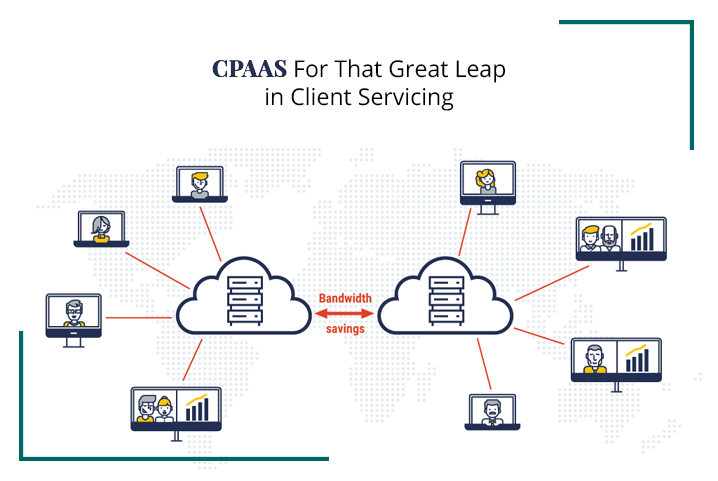
If you are into enterprise business, then the chances are that you have heard about the magic of CpaaS.
With the fast-paced growth and adoption of this omnichannel business communication tool, experts have started betting that CpaaS will turn into a billion dollar industry sooner than later.
What is CpaaS and what are the current trends and practices in CpaaS?
CpaaS brings you closer to your clients than you have ever imagined. The cloud-based platform is the ideal step forward for enterprises that desire real-time communication with their customers across multiple channels aligned to suit the latter’s preferences. CpaaS perfectly couples real-time communications (RTC) and unified communications and collaboration (UC&C) features to bring in the power of innovation in customer interaction.
As the demand for CpaaS solution is rising each passing day, it won’t be surprising to experience CpaaS boom. Popular ride-hailing apps, food delivery apps, etc. use CpaaS tools for enhancing customer experiences. Concurrently, CpaaS cloud environment offers software developers the right tools to integrate CRM and services.
As per Gartner report, CpaaS has helped vendors to increase business revenues by 35-75 percent. Further, the report says that the CpaaS market will reach $4.6 billion by 2021. So what are the trends that would define the CpaaS market and its vendors? Here’s what we believe will rule the CpaaS landscape this year.
#1. Omnichannel:
In the age of the smartphone, SMS is no longer an effective marketing channel. They have become no less than a spam folder. WhatsApp launched its business API last year, and the trend was caught on by other messaging apps like messenger, Twilio, Nexmo and MessageBird B.V. One can expect more and more CpaaS providers to offer vibrant and dynamic feature-rich omnichannel contact centers by 2019.
#2. ML and AI:
Business communication needs to be smarter, and CpaaS vendors are ensuring that all enterprise needs are served well. ML and AI will soon be part and parcel across all forms of communications, ML and AI in CpaaS is just the first step forward in this regard.
#3. Bots:
An extension of AI and ML, chatbots are the new trendsetters as far as enterprise-customer communication is concerned. While, in the past, CpaaS vendors have partnered with third party’s to offer Bot integration, we expect the trend to change in 2019. CpaaS vendors are all set to add AI, ML and data science teams for integration bot services in their packages.
#4. AR/VR:
The exponential rise in popularity of AR/VR has forced enterprises’ to change their perception about them. They seem them as an excellent opportunity to bring that X factor to service delivery and customer engagement.
#5. The GDPR (General Data Protection Regulation) Line:
Data privacy and protection is a debate that deserves an answer. The EU has introduced a new set of rules for increasing enterprise/ business liability on the customer data collected and stored by them. This would result in robust norms for data collection, storage and access for CpaaS vendors.
Today, CpaaS with a perfect mix of flexibility and utility plays a crucial role in granting the ‘much-desired’ global reach to enterprises. The cloud-based solution offers enterprises cost-effective measures to introduce communication and client engagement capacities. CpaaS makes CRM efficient by finding ways that are engaging for customers. And CRM is just one example. CpaaS effectiveness across cross functions and operations are slowly being unearthed. As an expert had quoted one day, “CpaaS is not only an investment for today but a greater tomorrow.”
Choosing the right CpaaS that meets your business’s’ needs can be a tiring and complex exercise. Right from the cloud infrastructure to the ever-increasing API’s, getting your head around the best CpaaS solution is not easy. However, Pratham with its years of expertise in cloud solutions can be your ideal cloud solution guide. Contact us today and benefit from our solutions based on Cloud, SaaS, and micro-services.








